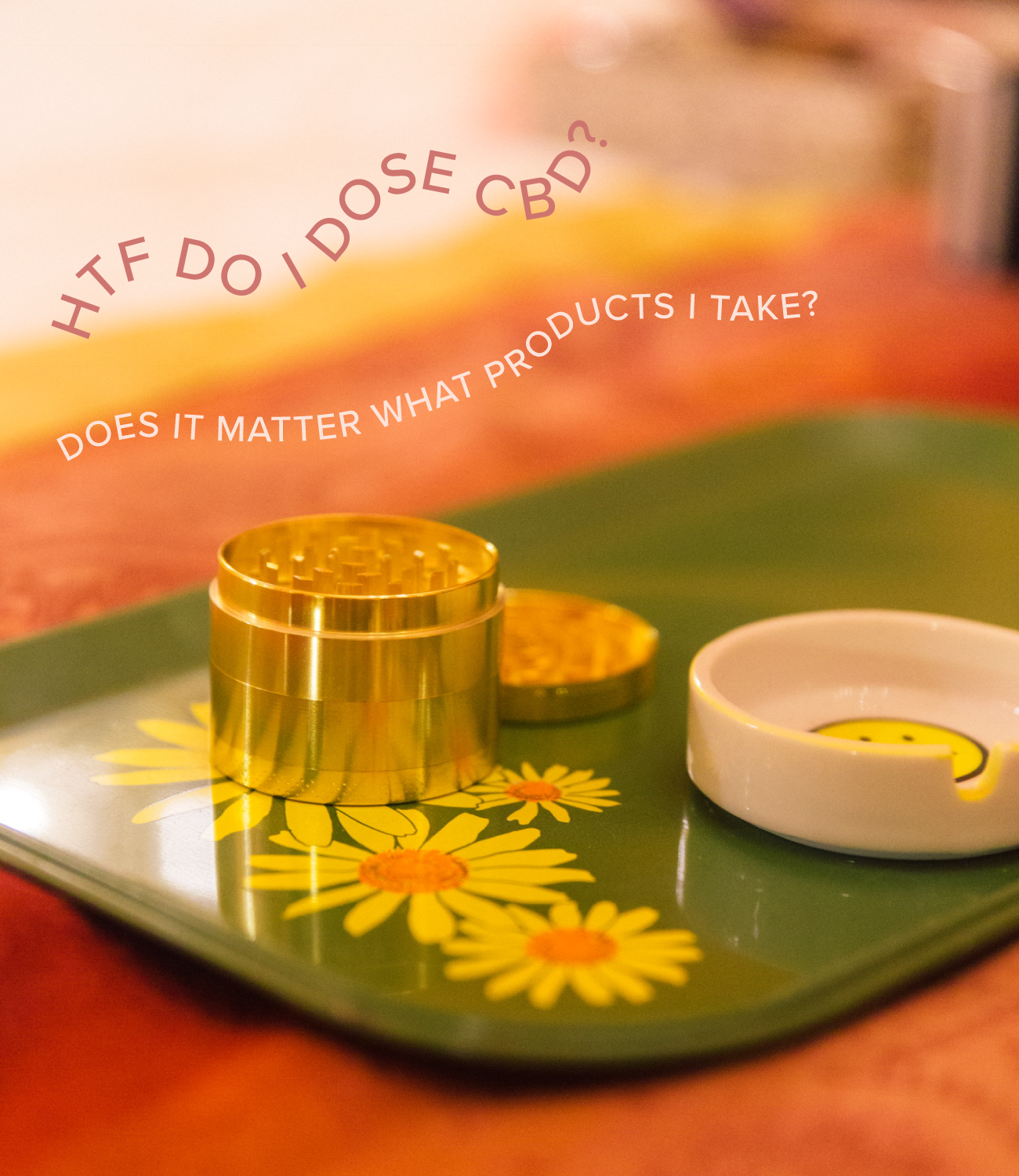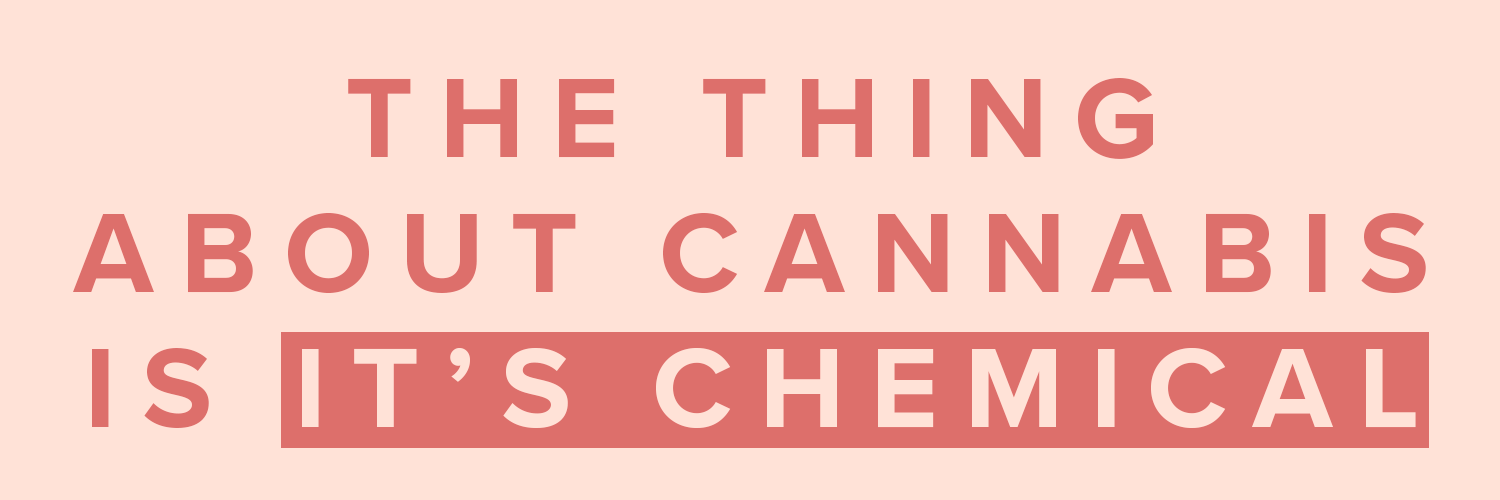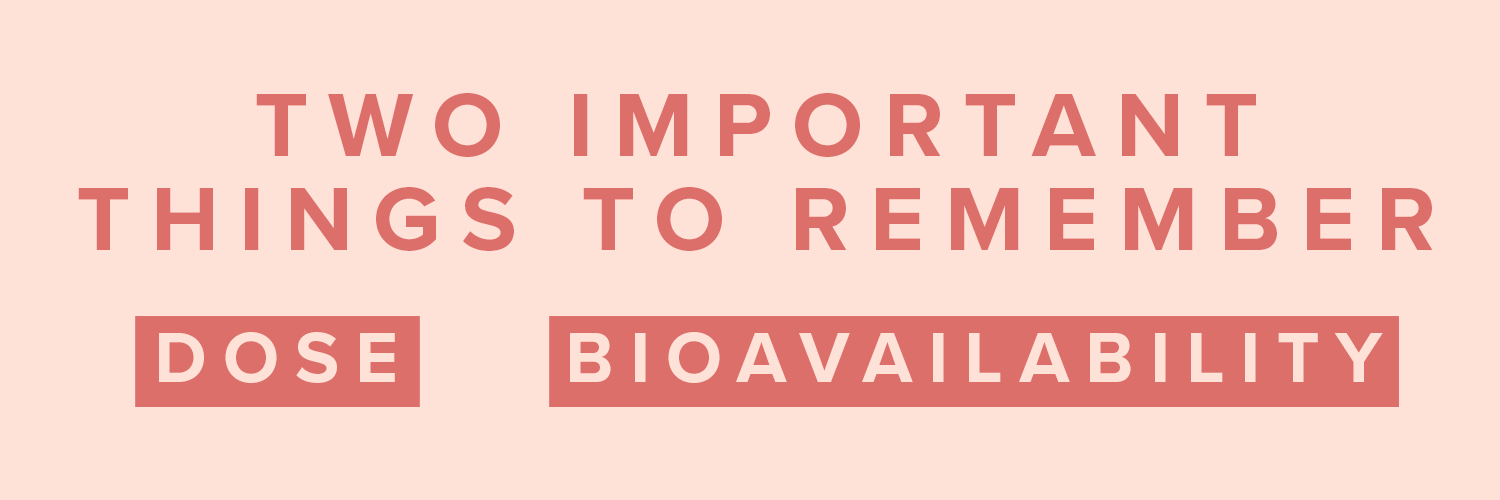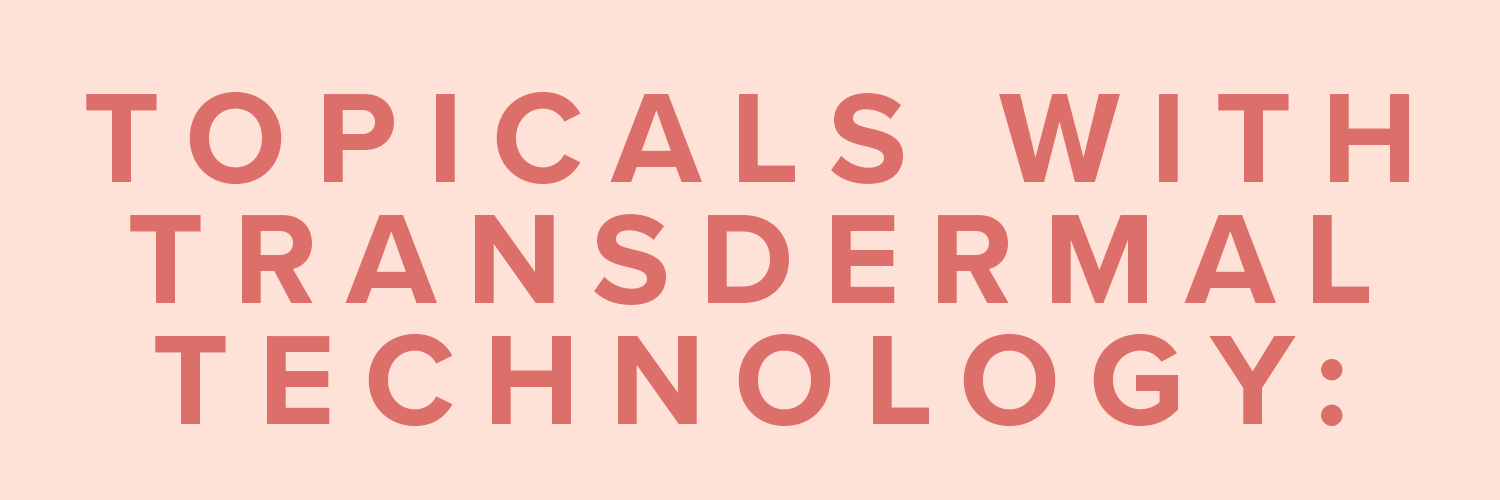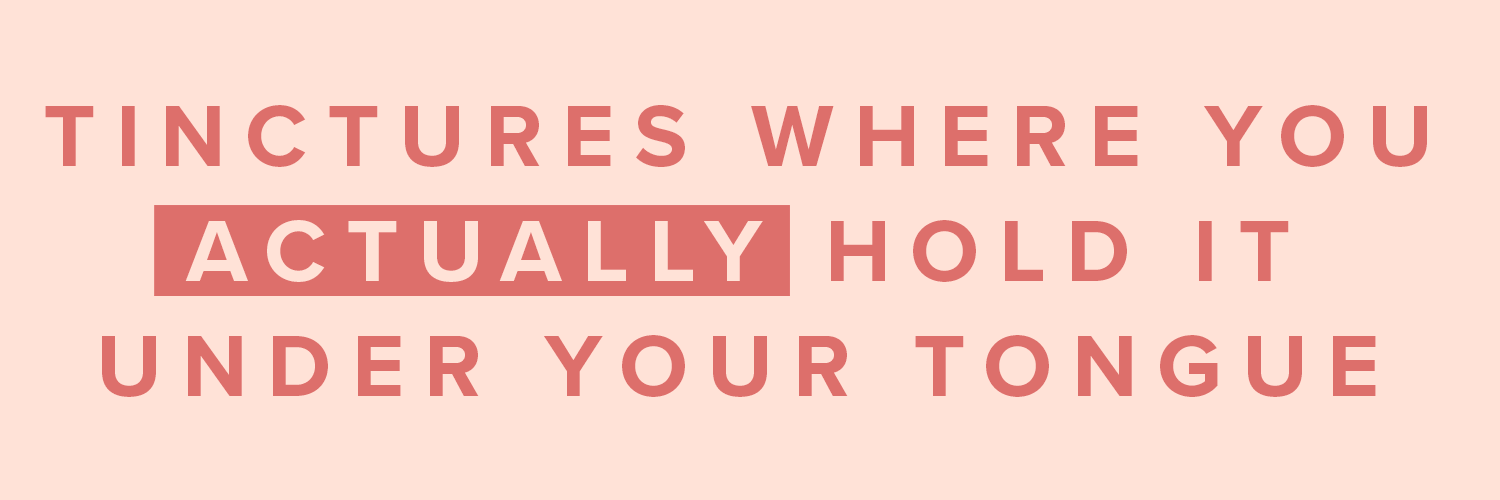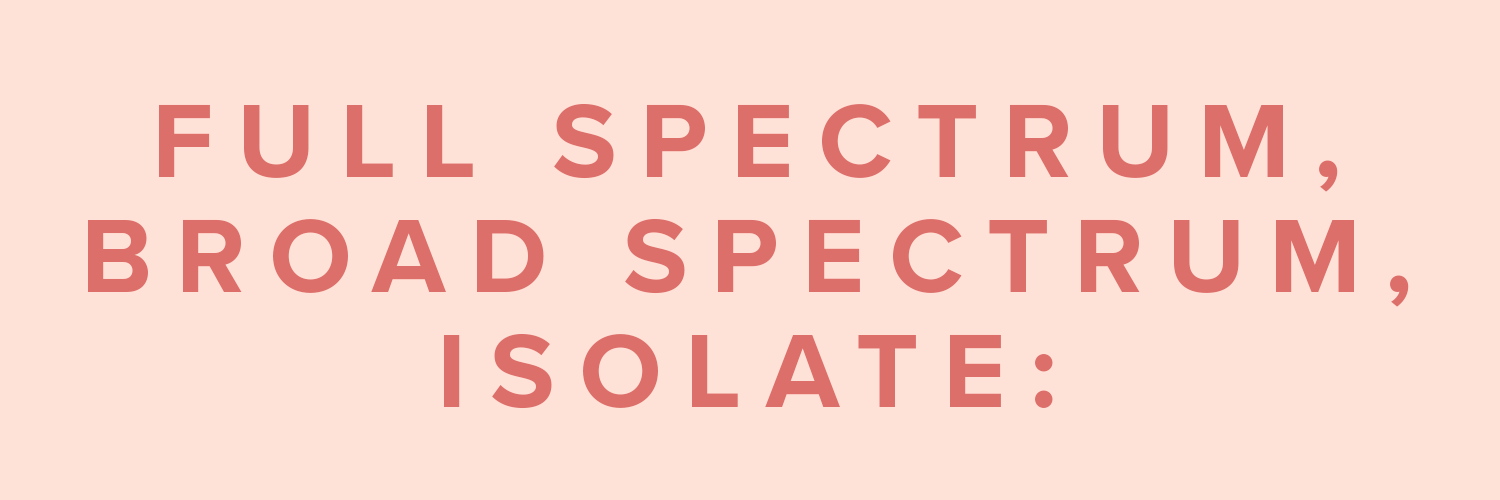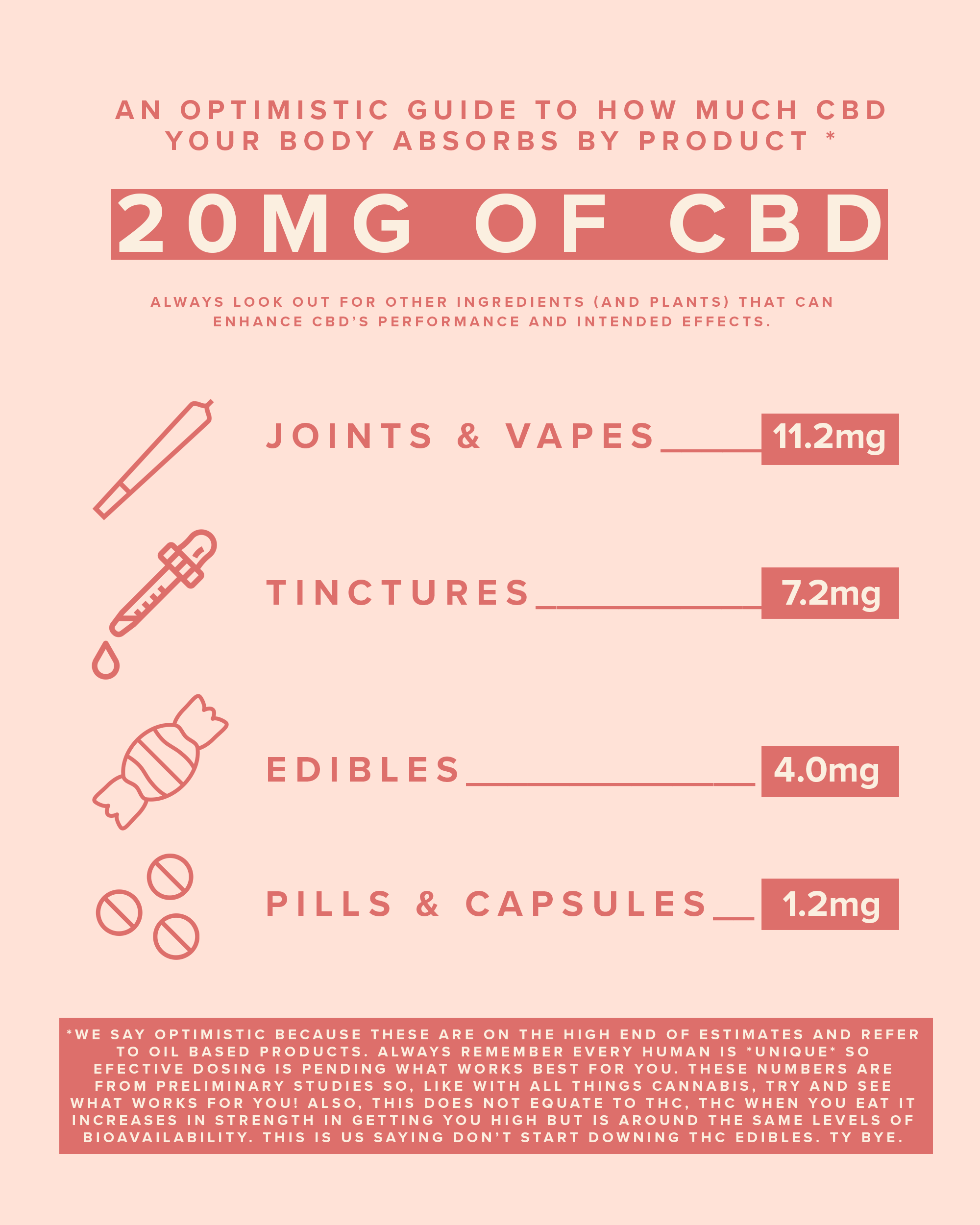This is How You Actually Dose CBD
When starting an education in weed, it's confusing. For those that don't have neurology or biochemistry degrees, even understanding the basics like your endocannabinoid system and CB1/CB2 receptors can have you googling "WTF is happening RN?"
The thing about cannabis is, it’s chemical. This isn’t some blessed yoni egg or an adaptogenic candle, it’s a plant made of compounds that desperately need more research. What we do know is weed is made up of chemicals (just like everything on earth) and these chemicals interact with your body. THC binds most notably to receptors in your brain, altering perception, and CBD doesn’t appear to actually bind to anything—it activates enzymes and receptors; notably CB2 receptors which are found all over the body regulating everything from mood to digestion to fertility. How CBD impacts those functions is unclear but if you need a refresher see here for the basics.
At the end of the day, the dose and bioavailability of your product is important. Dose refers to how much CBD, CBG, THC, CBN, etc. is in your product and bioavailability refers to how much of that dose actually gets into your body to be considered “active.” Today, we’re breaking down dosing and important definitions to understand.
Bioavailability: when speaking of supplements (hemp falls into this category), bioavailability is the quantity or fraction of the ingested dose that’s absorbed into your body to be considered active.
Two things impact bioavailability:
How your body ingests it: topical, smoked, oral, edible, or pill are a few common ways to get CBD into your body.
The supplement itself: full spectrum, broad spectrum, isolate and whether these ingredients are nanoemulsions.
Based on the research we have, here are a few ways to get cannabinoids into your system ranked from most bioavailable to least.
While the studies we have don’t outline the rate of absorption (% of bioavailability), look for a product that has transdermal technology or transdermal ingredients to make sure it penetrates the skin. What we do know is that topicals don’t get digested (aka first pass metabolism) meaning it’s stronger and more localized relief.
Humans are made of water. Most CBD tinctures are made of oil. Your body is hydrophilic and CBD tinctures are the opposite (hydrophobic, remember, this is a chemistry class). This doesn’t mean nothing will absorb; of all the “oral” methods (don’t @me), this is one of the better ways to absorb CBD. So, when the bottle says hold under your tongue for 30 seconds, you might want to overachieve and hold for 60 seconds. Even then… you’re only absorbing 12-36%. Also, before citing that you need fats to absorb CBD know that that’s only for edibles and is a study done in rats. No scientist made Ratatouille do a sublingual for 30 seconds… they gave the rodents cookies. If you’re going to eat a CBD edible or pill it better have fat.
Look, we love edibles. That being said, the oral bioavailability of CBD in edibles is low due to something called “first pass metabolism.” If you want something that “hits,” you’re going to need to down a lot of edibles. With food products, you’re looking at anywhere from 6-20% bioavailability with pills being more towards the 6% end.
Now that you know a bit about bioavailability by product type, let’s talk about the different versions of supplements you find in the CBD world:
Nanoemulsion is a way to make oils blend well in water by making the particle size much smaller, thus making it water-soluble (read: able to be absorbed more quickly and better by your body). There is also water-soluble CBD on the market, which is what you’re typically drinking when you have a CBD drink (and thus your body can absorb more).
Full spectrum means you maintain all ingredients found in the hemp flower. This means that full spectrum products have .3% or less THC because it doesn’t strip anything out, and there is research that shows this is more effective than CBD extracted alone, which would be called isolate. Broad Spectrum is when only the THC is removed but all other ingredients and cannabinoids are maintained. The best way to think of full spectrum and isolate is an orange versus a vitamin C pill, with broad spectrum acting more like a full spectrum product.
Now that you’re a pro, we’re leaving you with this (optimistic) and helpful chart for when you’re trying to understand dose.
At this point, you’re probably wondering “but how much should I take?” To that we only have the frustrating (but honest) answer of: ¯\_(ツ)_/¯ . Until we have more research, no one definitively knows. What we do know is you should test, start at 20mg (for context, we take upwards of 100mg a day), and see how you feel. You can tweak adding more or less. CBD isn’t adderall, klonopin or any other pharmacological drug. It’s a plant. Use it daily, be honest about how you feel until researchers and regulations get their shit together; and if you have serious concerns about your health, go see a doctor.

